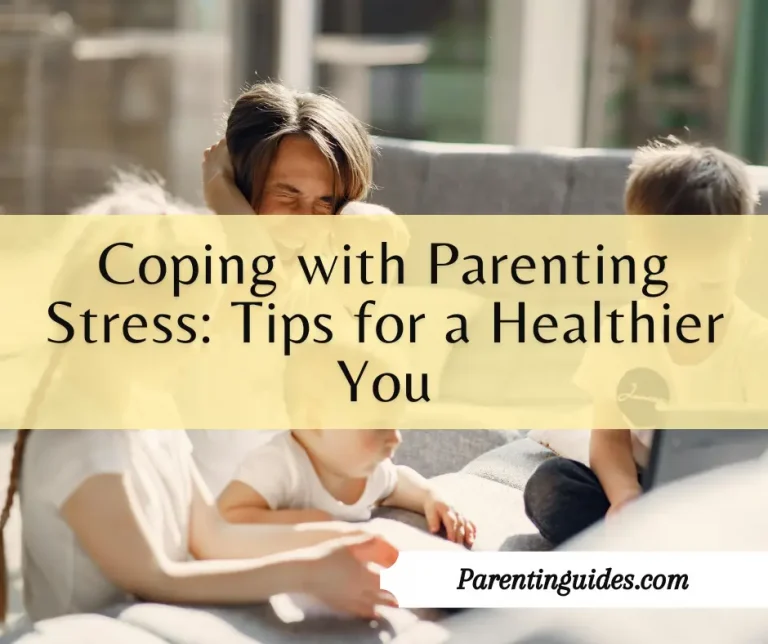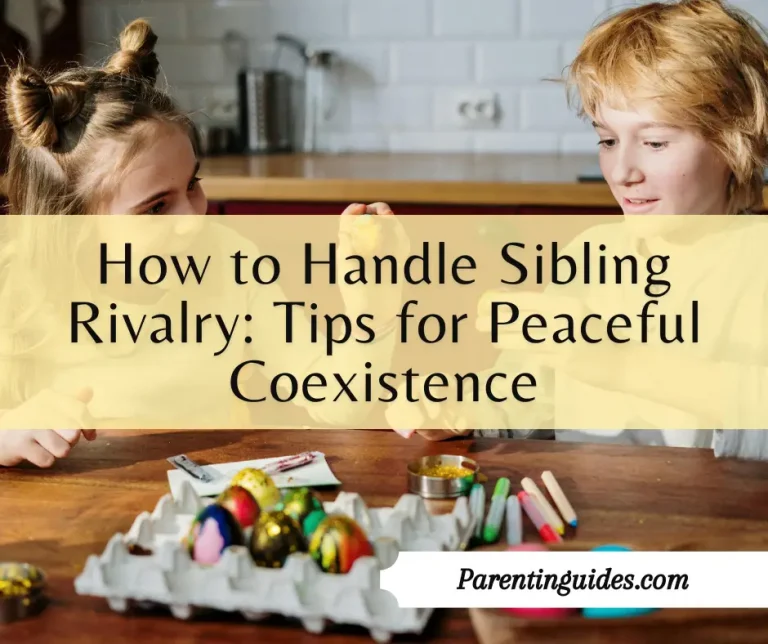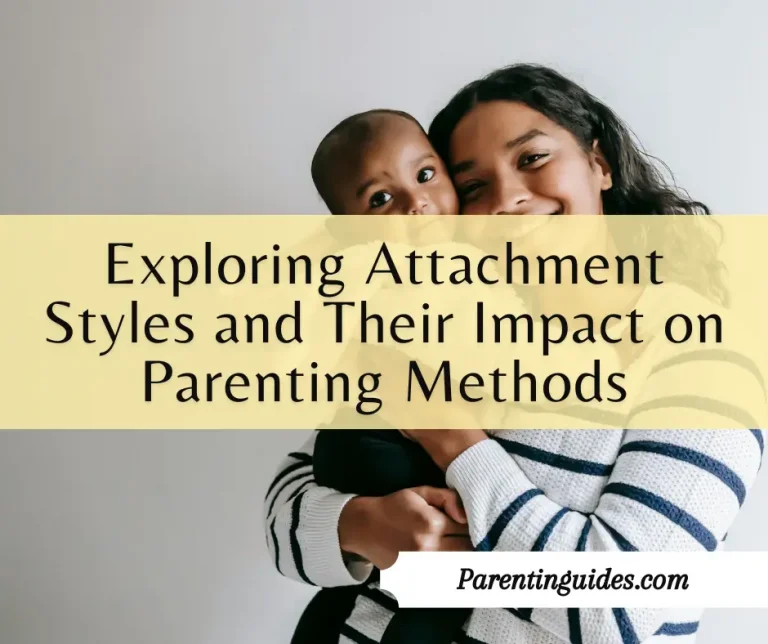Embarking on the parenting journey, my husband and I have always sought the best methods to raise our children with love and security. One approach that profoundly resonated with us is the Circle of Security Parenting. This method is not just a set of guidelines. Simply, it is a way to deeply understand what our children need from us at different moments.
Circle of Security Parenting helps parents be more attuned to their children’s emotional worlds, promoting strong and healthy bonds. It is based on decades of research and real-life application, showing its significant role in child development. This parenting style teaches us to become a secure base from which our children can explore the world and a haven to return to when they face challenges.
In this article, I will dive into the core principles and benefits of Circle of Security Parenting. We will look at how to practically apply its teachings in our daily lives and address common challenges that may arise. I will also explore how this approach adapts to different family structures and cultural backgrounds, ensuring it’s inclusive and effective for everyone.
As a mother, I have experienced firsthand how Circle of Security Parenting not only supports my children’s growth but also enriches our family life. My aim here is to share these insights and encourage other parents to explore how this approach can strengthen their parent-child bonds. Whether you are a new parent or have been on this path for a while, the Circle of Security can offer valuable perspectives that resonate with any family’s journey. So, let’s explore together how this powerful approach can make a difference in our lives and the lives of our children.
Understanding Circle of Security Parenting
Origins and Principles
My husband and I first came across Circle of Security Parenting during a parenting workshop. It struck a chord with us, as we were seeking ways to better connect with our children. The Circle of Security originated from decades of research into child attachment. Psychologists and researchers developed it to help parents understand and meet their children’s emotional needs.
The foundational principle of Circle of Security is quite simple. Simply, every child needs a secure base from which to explore the world and a safe haven to return to for comfort and reassurance. This concept is rooted in the attachment theory, which emphasizes the importance of a child’s bond with their caregivers. It suggests that children who are securely attached tend to be more resilient and have healthier relationships throughout their lives.
In practice, Circle of Security Parenting teaches us to observe what our children are communicating through their behavior, which is not always obvious. For example, when our son tugs at my leg, he is not just seeking attention. Here, he is asking for reassurance that it is safe to venture out and play. Recognizing these signals allows us to respond more effectively to our children’s needs.
The beauty of this approach is that it encourages us as parents to also look at our own experiences and how they shape the way we interact with our children. It has made us more aware and reflective, by helping us create a more supportive environment for our family.
Core Components
The Circle of Security Parenting revolves around two key components. They are the Secure Base and the Safe Haven. Understanding these roles has profoundly changed how we interact with our children daily.
The Secure Base is essentially the foundation that allows children to feel secure enough to explore their surroundings. When our daughter plays in the park, she looks back to check if I am there. My presence tells her it is okay to explore and learn, knowing she can return to me if she needs to.
On the other hand, the Safe Haven is what our children come back to when they feel stressed or frightened. It is our role to provide comfort and help them manage their emotions. For instance, when our son falls and scrapes his knee, he runs to us not just for the physical comfort of a bandage but for the emotional reassurance that everything will be alright.
These components work together to help children develop a sense of familiarity and security. By consistently providing a Secure Base and Safe Haven, we teach our children that they can trust us to meet their needs, whether they are eager to explore or need comfort.
Applying these principles has been a journey of growth for both us and our children. It has helped us build a parenting approach where our children feel truly supported and loved. This secure attachment fosters their independence and emotional growth, preparing them to handle the world’s complexities with confidence. My husband and I have seen firsthand how these practices strengthen the bond we share with our children. Simply, this is making our family life more harmonious and connected too.

Implementing the Circle of Security Parenting in Everyday Life
Practical Strategies
Integrating the principles of Circle of Security Parenting into our daily lives has been a game-changer for my husband and me. So, here are some practical strategies that have helped us use this approach effectively:
- Being Present: One of the simplest, yet most powerful, strategies is to be emotionally and physically present for our children. When they speak, we give them our full attention by making eye contact and listening actively. This shows them they are valued and supported.
- Following Their Lead: We let our children take the lead in play and exploration. This means observing them to understand their interests and needs. For instance, if our daughter is intently building with blocks, we sit with her and discuss her creations, encouraging her to express herself and explore further.
- Supporting Exploration: We encourage our children to explore, ensuring they know we are there as their secure base. Whether it is trying a new sport or learning to ride a bike, we are there to cheer them on, showing confidence in their abilities.
- Providing Comfort: Whenever our kids are upset or distressed, we offer comfort and reassurance. This might be a hug, a calm conversation, or sitting together quietly. Here, it is also about showing them that no matter what, we are their safe haven.
- Communicating Openly: We also talk about emotions openly and regularly. If our son is frustrated, we will discuss what frustration feels like, helping him to name his emotions and understand them better.
These strategies don’t just help our children. They have also made us more mindful and patient as parents.
Common Challenges and Solutions
When it comes to Circle of Security Parenting, adopting this is not without its challenges. Here are some common issues we’ve faced and how we’ve addressed them:
- Consistency: One of the biggest challenges we have faced is maintaining consistency. There are days when being a perfectly attuned parent is harder than others. On such days, we remind ourselves that it is okay to be “good enough.” We try to be consistent with our responses as much as possible. But, we also forgive ourselves when things do not go perfectly.
- Misreading Cues: Sometimes, it is tough to interpret what our children need. We might mistake a need for independence as misbehavior. When this happens, we take a step back to reassess our children’s behavior more objectively. We ask questions like, “What might he be feeling right now?”
- Balancing Needs: With more than one child, balancing everyone’s needs can be tricky. We strive to give each child individual attention each day, even if it is just a few minutes of one-on-one time. This helps each child feel valued and secure.
- Dealing with Stress: Parental stress can impact our ability to provide a secure base and safe haven. We have learned the importance of taking care of our emotional well-being. This might mean taking turns with parenting duties, getting enough rest, or even seeking support from friends or a therapist.
- Adjusting Expectations: Initially, we expected immediate changes in our children’s behavior. We soon realized that building secure attachments is a gradual process. We have also learned to be patient and celebrate small victories along the way.
Each of these challenges has taught us valuable lessons in patience, understanding, and resilience. By addressing them head-on, we have not only improved our parenting approach but also deepened our relationship with our children.
Benefits of Circle of Security Parenting
Emotional and Social Development
Circle of Security Parenting has deeply impacted our children’s emotional and social development. This is something my husband and I observe every day. This approach emphasizes understanding and responding to our children’s emotional needs. Simply, it is crucial for their overall well-being.
Firstly, emotional regulation is a significant benefit by consistently providing a safe haven and a secure base. Here, we help our children learn to manage their feelings more effectively. For instance, when our daughter feels overwhelmed, she knows she can come to us for comfort. Over time, she has started to learn what these feelings mean and how to handle them herself. Simply, this is a key aspect of emotional maturity.
Secondly, this parenting style enhances social skills. Our son, who was once shy, has become more confident in interacting with others. The security he feels at home has translated into confidence in social settings. He is more willing to engage with peers, share his toys, and participate in group activities at school. This change came because he knew he had a supportive family to fall back on. It is by giving him the courage to reach out to others.
The ability to recognize and express emotions appropriately also plays a crucial role in developing empathy. Our children are learning not just to understand their own emotions. It is also to recognize and respond to the emotions of others. This empathy is the foundation of strong, healthy relationships in the future.
Circle of Security Parenting has given our children the tools to navigate their emotions and relationships effectively. Watching them develop these skills has been incredibly rewarding and a testament to the effectiveness of this approach.
Strengthening the Parent-Child Bond
Implementing Circle of Security Parenting has significantly strengthened the bond between us and our children. This approach fosters an environment of open communication and trust, which are pillars of a strong parent-child relationship.
By consistently being there as both a secure base and a safe haven, we have built a foundation of security and trust with our children. They know that no matter what happens, they can come to us for support and guidance. This trust has opened up lines of communication. So, our children are more open about sharing their feelings and experiences with us, knowing they will be met with understanding and support.
This strong bond has also made the discipline more effective. When there are moments of misbehavior, our children are more receptive to learning from these experiences because they understand that our guidance is rooted in love and concern for their well-being. They are not afraid to make mistakes. It is because they know that we are here to help them learn and grow, not just to punish them.
Moreover, this secure attachment has given our children a sense of stability, which is crucial during challenging times. Whether it’s a family move, a new school, or any other significant change, our kids handle these situations better because they feel secure and supported.
In conclusion, Circle of Security Parenting has not just improved our children’s emotional and social abilities but has fundamentally enhanced the loving connection we share as a family. This stronger bond not only makes our daily lives smoother but also enriches the quality of our relationships. It is a continual source of joy and comfort for all of us, reinforcing the value of this nurturing approach every single day.

The Role of Circle of Security in Different Family Structures
Adapting to Various Family Dynamics
Circle of Security Parenting is a flexible approach that my husband and I have found can be adapted to suit various family dynamics. Whether it is a single-parent family, a blended family, or an extended family, the core principles of providing a secure base and safe haven remain impactful.
- Single-parent families often worry about the challenge of fulfilling both roles. A friend of mine, a single mother, shared with me, the Circle of Security helped her be more attuned to her child’s needs. It is even when managing everything alone. It taught her to recognize when her son needed her as a safe haven and when he was ready to explore, helping her balance her dual roles effectively.
- Blended families face their unique challenges, such as establishing trust and security with new family members. In our neighborhood, a blended family used the principles of the Circle of Security to foster bonds between step-siblings and stepparents. By consistently being available and responsive, the parents and stepparents worked as a team to provide a stable environment where all children felt valued and secure.
- Extended families often have the advantage of multiple adults who can act as secure bases and safe havens. In our own extended family gatherings, we encourage grandparents, aunts, and uncles to engage with the children in a manner that supports the parents’ efforts. This shared responsibility not only strengthens the familial bonds but also reinforces the child’s sense of security within the larger family network.
Adapting the Circle of Security to different family structures involves understanding and addressing the specific needs and dynamics of each family. But the essence remains the same. Here, every child deserves to feel secure and supported, no matter the family configuration.
Cultural Considerations
Implementing Circle of Security Parenting across different cultural contexts has opened our eyes to the universal need for secure attachments, albeit tailored to fit various cultural norms and values. My husband and I have learned from other families in our community. Here, it is culturally diverse, about integrating these parenting principles in ways that respect and reflect their unique cultural backgrounds.
It is a known fact that in some cultures, parenting is a communal activity with multiple family members involved. For example, in many Asian cultures, respect and familial duty play significant roles, and parenting practices may emphasize obedience and group harmony. Here, Circle of Security can be adapted to reinforce these values while ensuring the child feels safe and understood within the cultural framework.
Conversely, in Western cultures where independence and self-expression are often prioritized, Circle of Security encourages parents to support their children’s explorative and expressive behaviors in a secure framework. No matter the cultural backdrop, the principles of being a secure base and safe haven are applied in ways that align with the family’s cultural expectations and practices.
Moreover, discussing and integrating these diverse cultural perspectives enhances the overall parenting approach. It teaches parents and children alike to appreciate and navigate a world of diverse relationships and values.
Circle of Security’s flexibility in adapting to various cultural and familial settings is one of its strengths. It allows us to maintain our cultural identities while ensuring our children grow up in a nurturing, supportive environment. The ability to meld these principles with cultural practices enriches our family lives and helps us build strong, positive relationships with our children.

Conclusion
Reflecting on our journey with Circle of Security Parenting, my husband and I have witnessed firsthand how transformative this approach can be. It has not only deepened our connection with our children but also empowered them to become confident, emotionally aware individuals. This method has taught us the importance of being a secure base and safe haven for our children, which are roles we cherish deeply.
Circle of Security Parenting is more than just a set of techniques. Simply, it is a philosophy that nurtures the whole family. It encourages us to understand our children’s needs and respond to them in a way that supports their growth and development. This approach has helped us to be more patient and to communicate more effectively. Moreover, it also helped us to appreciate the unique personality of each child.
One of the most rewarding aspects of adopting this method has been seeing our children thrive emotionally and socially. They have become more resilient in facing life’s challenges and more compassionate towards others. These are invaluable traits that will guide them throughout their lives.
I encourage every parent, whether new or experienced, to explore the principles of Circle of Security Parenting. It is adaptable to any family structure and can be integrated into various cultural contexts, making it accessible to all. This approach does not promise a perfect parenting journey, but it offers the tools to navigate this path with more confidence and joy.
For those interested in deepening their understanding of Circle of Security Parenting, there are many resources available, including workshops, books, and online courses. Engaging with these materials can provide additional support and insights, helping you tailor the principles to your family’s specific needs.
As we continue to apply Circle of Security in our daily interactions, we remain committed to fostering a loving, secure environment for our children. This journey has been one of learning and love, filled with both challenges and triumphs. By sharing our story, I hope to inspire other families to embrace this enriching approach. It will also strengthen the bonds that make our lives so meaningful.









